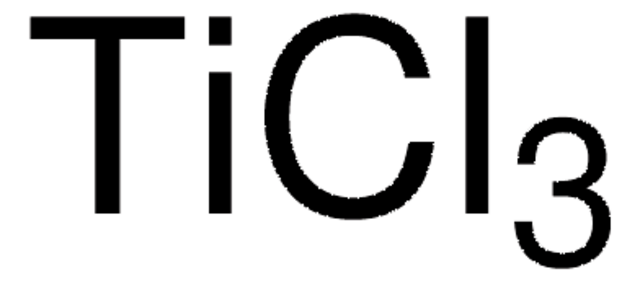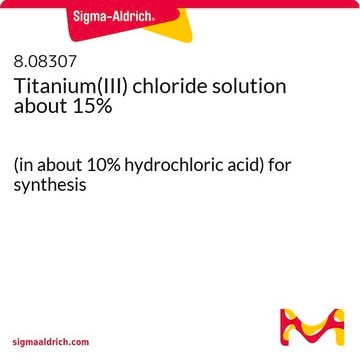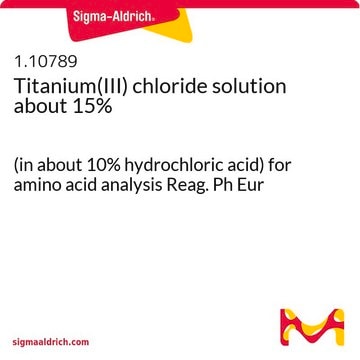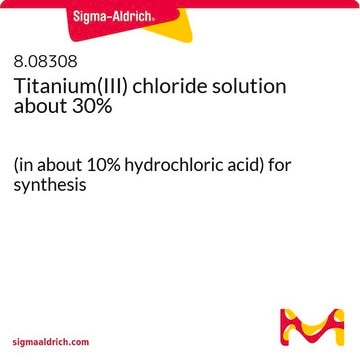Wichtige Dokumente
249998
Titan(III)-chlorid -Lösung
~10 wt. % in 20-30 wt. % hydrochloric acid
Synonym(e):
Titantrichlorid
About This Item
Empfohlene Produkte
Eignung der Reaktion
reagent type: catalyst
core: titanium
Konzentration
~10 wt. % in 20-30 wt. % hydrochloric acid
Dichte
1.192 g/mL at 25 °C
SMILES String
Cl[Ti](Cl)Cl
InChI
1S/3ClH.Ti/h3*1H;/q;;;+3/p-3
InChIKey
YONPGGFAJWQGJC-UHFFFAOYSA-K
Suchen Sie nach ähnlichen Produkten? Aufrufen Leitfaden zum Produktvergleich
Signalwort
Danger
H-Sätze
Gefahreneinstufungen
Eye Dam. 1 - Met. Corr. 1 - Skin Corr. 1B - STOT SE 3
Zielorgane
Respiratory system
Lagerklassenschlüssel
8B - Non-combustible corrosive hazardous materials
WGK
WGK 3
Flammpunkt (°F)
Not applicable
Flammpunkt (°C)
Not applicable
Persönliche Schutzausrüstung
Faceshields, Gloves, Goggles, type ABEK (EN14387) respirator filter
Hier finden Sie alle aktuellen Versionen:
Besitzen Sie dieses Produkt bereits?
In der Dokumentenbibliothek finden Sie die Dokumentation zu den Produkten, die Sie kürzlich erworben haben.
Unser Team von Wissenschaftlern verfügt über Erfahrung in allen Forschungsbereichen einschließlich Life Science, Materialwissenschaften, chemischer Synthese, Chromatographie, Analytik und vielen mehr..
Setzen Sie sich mit dem technischen Dienst in Verbindung.









